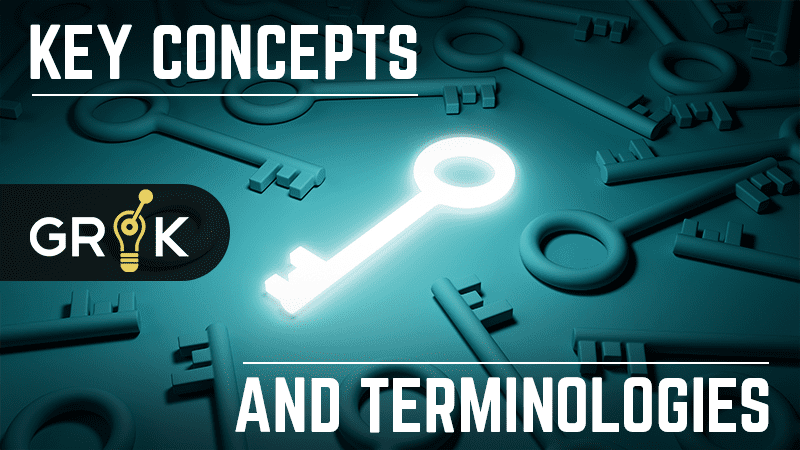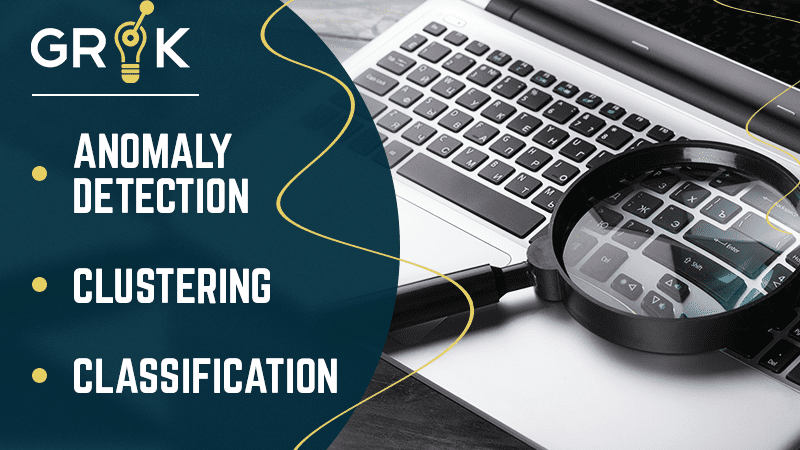Welcome to the transformative world of Artificial Intelligence for IT Operations, or AIOPs, where technology meets ingenuity to revolutionize how we manage IT infrastructures. In this comprehensive guide, we will embark on a journey through the heart of AIOPs, uncovering its profound impact on modern IT operations. So, let’s dive in and explore how AIOPs, with its emphasis on automation and observability, are reshaping the landscape of IT operations.
Definition and Overview
Imagine having an AI-driven co-pilot for your IT systems that understands and learns from your infrastructure’s intricacies. In fact, AIOPs do precisely that. It’s the fusion of artificial intelligence (AI) and data analytics, creating a dynamic synergy that empowers IT professionals with unprecedented insights and automation capabilities. In essence, it’s like having a smart assistant that’s always ready to help.
Furthermore, AIOPs rely on machine learning algorithms to process and make sense of vast troves of data generated by IT systems. Indeed, it acts as a vigilant sentinel, monitoring system performance, identifying anomalies, and predicting potential issues. This proactive approach prevents disruptions and allows IT teams to optimize resources, saving time and money.
To illustrate its power, consider a scenario where a sudden surge in website traffic threatens to overload your servers. AIOPs can detect this surge quickly and automatically allocate additional resources, ensuring your website stays responsive without manual intervention. In essence, it’s like having a team of IT experts working tirelessly, 24/7, to keep your systems running smoothly.
Historical Background of AIOPs
The story of AIOPs traces its roots to the early 21st century when AI technologies began to merge with traditional IT management practices. Technology giants and visionary startups alike recognized the potential of AI in processing and analyzing the avalanche of data generated by modern IT systems.
Early experiments in AIOPs were marked by rule-based automation, where predefined rules guided system responses. However, as AI technologies advanced, so did AIOPs. Implementing machine learning and predictive analytics transformed it into a dynamic, self-learning system.
Fast forward to today, AIOPs represent the culmination of years of innovation. Interestingly, it has evolved from a theoretical concept to a practical solution, fundamentally altering how IT operations are approached. With the advent of AIOPs, IT teams are no longer simply reacting to issues; they are proactively preventing them, providing a level of service and reliability that was once considered unattainable.
The Need for AIOPs in Modern IT
In the digital transformation era, organizations are navigating a landscape of ever-increasing complexity. Consequently, IT infrastructures have morphed into intricate ecosystems where myriad components must function seamlessly. Given this scenario, this complexity gives rise to several critical needs that AIOPs address:
Increased Complexity:
Modern IT infrastructures are akin to intricate puzzles, with countless interdependencies. Remarkably, AIOPs excel at deciphering these relationships, ensuring that every piece of the puzzle fits perfectly.
Data Overload:
The data generated by IT systems is overwhelming. However, AIOPs thrive on this data to provide real-time insights and recommendations. It transforms data from a burden into a valuable asset.
Demand for Efficiency:
Downtime is costly in terms of revenue and reputation. To combat this, AIOPs automate routine tasks, thereby reducing the risk of human error and minimizing downtime. It enables IT teams to focus on strategic initiatives,ultimately increasing efficiency.
Desire for Innovation:
In the digital age, innovation is the lifeblood of organizations. Interestingly, AIOPs liberate IT professionals from repetitive tasks, giving them the time and freedom to innovate. It’s a catalyst for progress in a rapidly evolving tech landscape.
As we journey deeper, we will explore their practical applications, the technologies that power them, and how organizations of all sizes can leverage their capabilities to stay ahead in the digital era. Whether you’re a seasoned IT professional or a newcomer to the world of AI, this guide will equip you with the knowledge and insights you need to harness the transformative potential of AIOPs.

Key Concepts and Terminologies
As we venture deeper, the foundational concepts of automation, observability, incident management, and the nuances of anomaly detection, clustering, and classification come into sharper focus.
Automation:
Automation in AIOPs is akin to having a tireless digital assistant that takes care of routine tasks, allowing IT professionals to direct their energies toward strategic endeavors. In essence, it’s the culmination of AI algorithms orchestrating actions, from the mundane to the mission-critical, with impeccable precision.
Consider a scenario where an online retailer faces a sudden surge in customer orders during a holiday sale. With automation, scaling up resources to handle the increased load would be smooth. But AIOPs, armed with automation, can instantly recognize the uptick in traffic and dynamically allocate additional servers, ensuring seamless shopping experiences for customers.
Automation, however, extends beyond resource management. It encompasses the entire IT landscape, from infrastructure provisioning to application deployment and incident resolution. Interestingly, it’s not just about efficiency; it’s a strategic lever that empowers organizations to adapt swiftly to changing demands.
Observability in AIOPs:
Observability in AIOPs is the art of peering into the inner workings of complex IT systems. In essence, It’s akin to having X-ray vision, allowing IT professionals to diagnose issues, optimize performance, and ensure reliability. This threefold approach involves monitoring, logging, and tracing, creating a comprehensive tapestry of insights.
Consider a symphony orchestra, each instrument producing a unique sound. Monitoring is akin to listening to each device individually, ensuring it plays its part harmoniously. Logging is like recording the entire performance, capturing every note and nuance. Tracing, however, follows the musical score, revealing how each instrument contributes to the composition.
Observability isn’t just about keeping IT systems alive and ensuring they perform at their best. Take, for instance, a global cloud provider. Through observability, they track the performance of millions of virtual machines in real-time, identifying and rectifying bottlenecks to deliver unparalleled service reliability.
Incident Management:
Incident management in AIOPs transforms the chaos of IT disruptions into a choreographed ballet of response and resolution. Specifically, it involves detecting, classifying, and swiftly mitigating incidents, ensuring minimal disruption to operations.
Imagine an AIOP tool as an astute detective. It uses historical data and predictive algorithms to recognize and classify anomalies accurately. When an incident occurs, it doesn’t just raise an alarm; it provides IT professionals with a detailed incident report, suggesting remediation actions.
Consider a scenario where a healthcare institution relies on AIOPs for network security. When a potential security breach is detected, it alerts the security team and classifies the threat, enabling a targeted response. This proactive incident management safeguards sensitive patient data and maintains the institution’s reputation.

Anomaly Detection, Clustering, and Classification
Now, let’s explore the core analytical engines of AIOPs—anomaly detection, clustering, and classification. These techniques are the architects of intelligent analysis and decision-making, breathing life into the data that flows through IT systems.
Anomaly Detection
Anomaly Detection is the art of identifying irregularities amidst the data stream. It’s like having a guardian angel that watches over your IT environment, spotting deviations from the norm. Whether it’s an unexpected spike in server resource usage or a sudden drop in website traffic, anomaly detection raises the alarm, allowing IT professionals to investigate and respond swiftly.
Clustering
Clustering takes the chaos of data and brings order. It groups similar events or data points like a jigsaw puzzle. In AIOPs, clustering helps recognize patterns within the data, making identifying trends, commonalities, and potential issues easier.
Classification
Classification is the final piece of the puzzle. It categorizes events or data into predefined classes, providing context and meaning. Classification ensures that IT professionals know precisely what they deal with when an incident occurs. Is it a security breach, a performance bottleneck, or a software glitch? AIOPs can answer that question, streamlining incident response.
Consider a cutting-edge manufacturing company that employs AIOPs for quality control. Anomaly detection identifies deviations in the production process, clustering groups similar defects together, and classification identifies the specific type of defect. This not only ensures product quality but also drives continuous process improvement.
By mastering these concepts, organizations unlock the full potential of AIOPs, transforming their IT operations into agile, efficient, and innovative powerhouses. In fact, automation, observability, and intelligent analysis form the bedrock of this transformation, empowering IT to transcend its traditional support role and become a strategic enabler of business success.
In the ever-evolving landscape of IT operations, where digital complexities grow and data surges like a relentless tide, the emergence of AIOPs, or Artificial Intelligence for IT Operations, represents a beacon of transformation. Moreover, throughout this comprehensive guide, we’ve ventured deep into the heart of AIOPs, uncovering its profound impact on the modern IT ecosystem.
AIOPs are not just another technological trend; it’s a paradigm shift that reshapes how organizations approach IT management. At its core, AIOPs embody a synergy of automation, observability, and intelligent analysis, creating a dynamic force that empowers IT professionals and enhances the resilience and efficiency of IT systems.
The Core Tenets of AIOPs: Automation, Observability, Intelligence
The core analytical engines of AIOPs—anomaly detection, clustering, and classification—breathe life into data, thereby allowing IT professionals to recognize patterns, anomalies, and trends. Interestingly, they convert data streams into actionable insights, ensuring that IT operations are reactive and proactive.
Finally, as we conclude our journey, it’s clear that AIOPs aren’t just a technological advancement; it’s a strategic imperative. Organizations that embrace it, unlock the full potential of their IT operations, turning them into agile, efficient, and innovative powerhouses. In essence, it’s like opening a treasure chest of opportunities and possibilities.
AIOPs aren’t bound by industry or scale. Whether you’re a global e-commerce giant managing peak traffic, a healthcare institution safeguarding patient data, a financial institution protecting assets, or a manufacturing company ensuring product quality, AIOPs have a role.
In this digital transformation era, where the ability to adapt and innovate is paramount, AIOPs aren’t just an option; it’s a necessity. Indeed, it empowers organizations to thrive in the face of complexity, data overload, and the relentless pursuit of efficiency and innovation.
Furthermore, as we continue our journey through the world of AIOPs is ongoing, and the possibilities it offers are limited only by your imagination. As you navigate this transformative landscape, may you harness the insights and capabilities to elevate your IT operations and drive your organization toward new horizons of success.
You can also read about Revolutionizing IT Operations: The Transformative Power of Domain-Agnostic AIOps:

